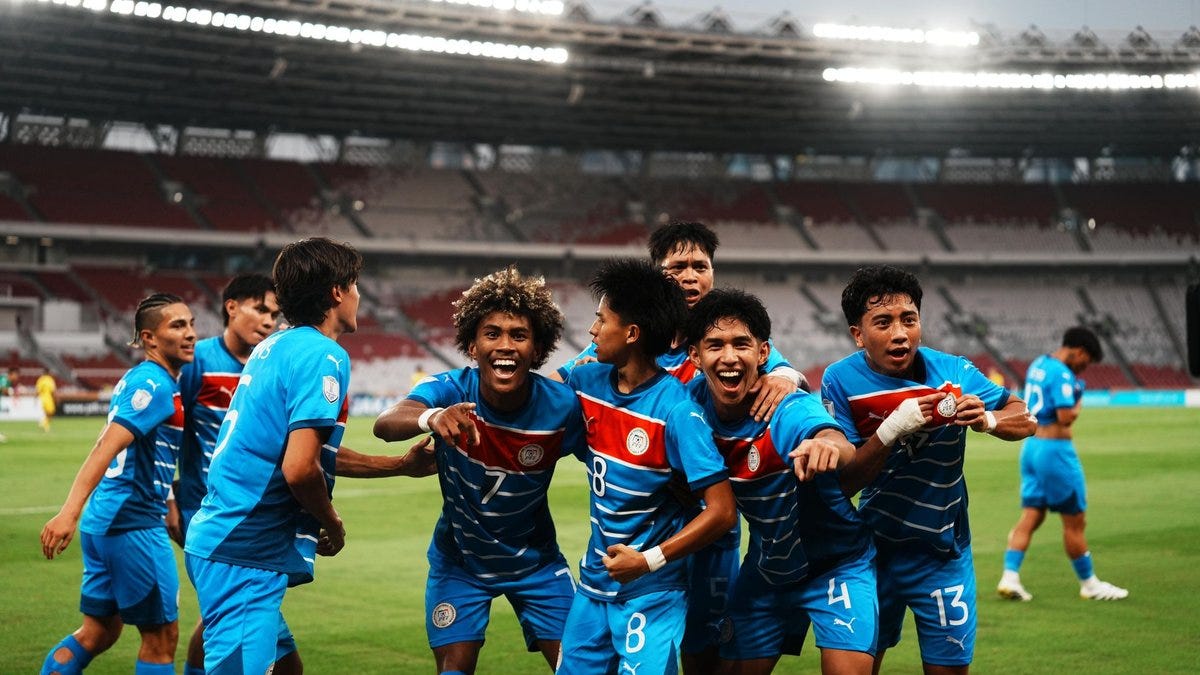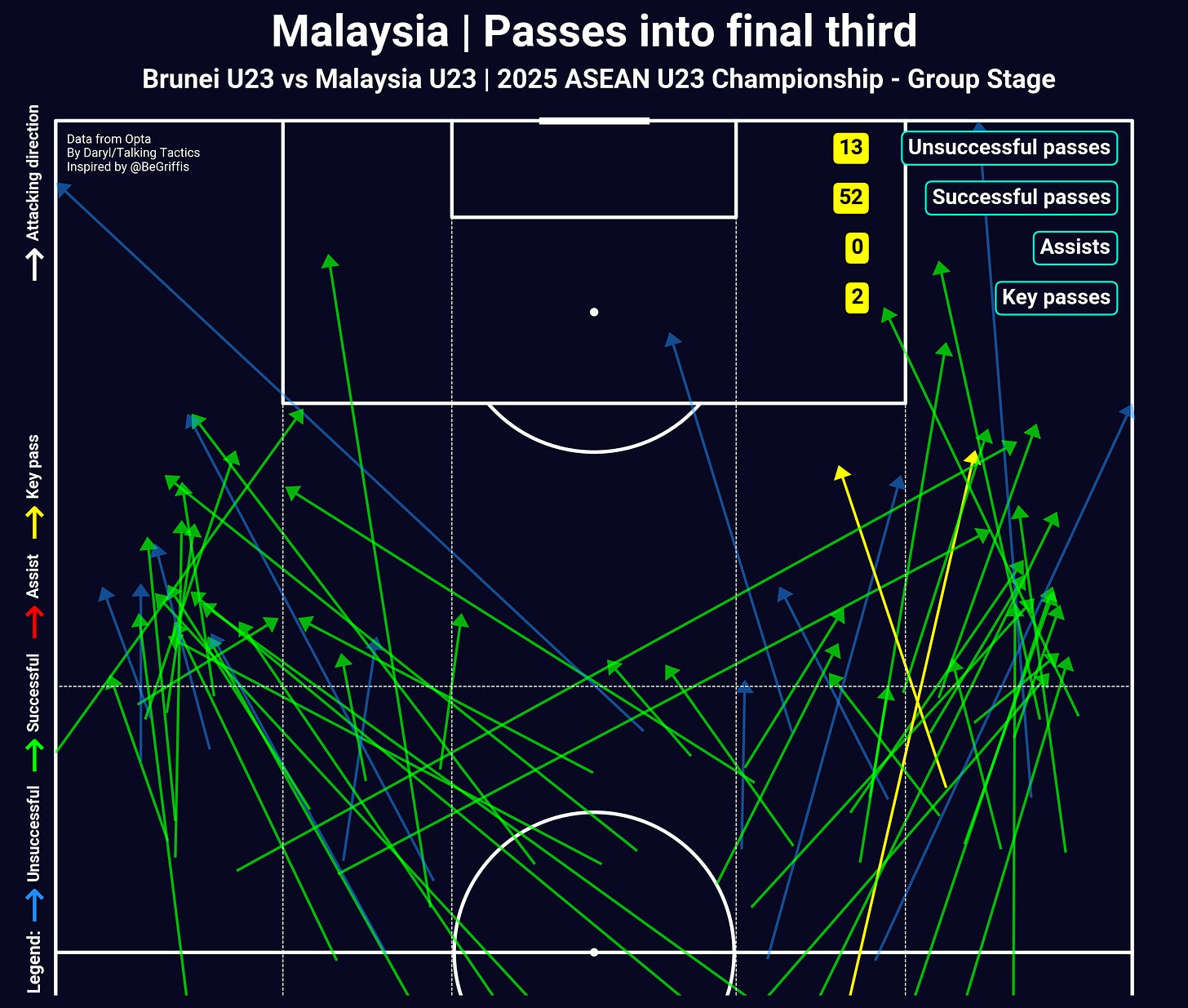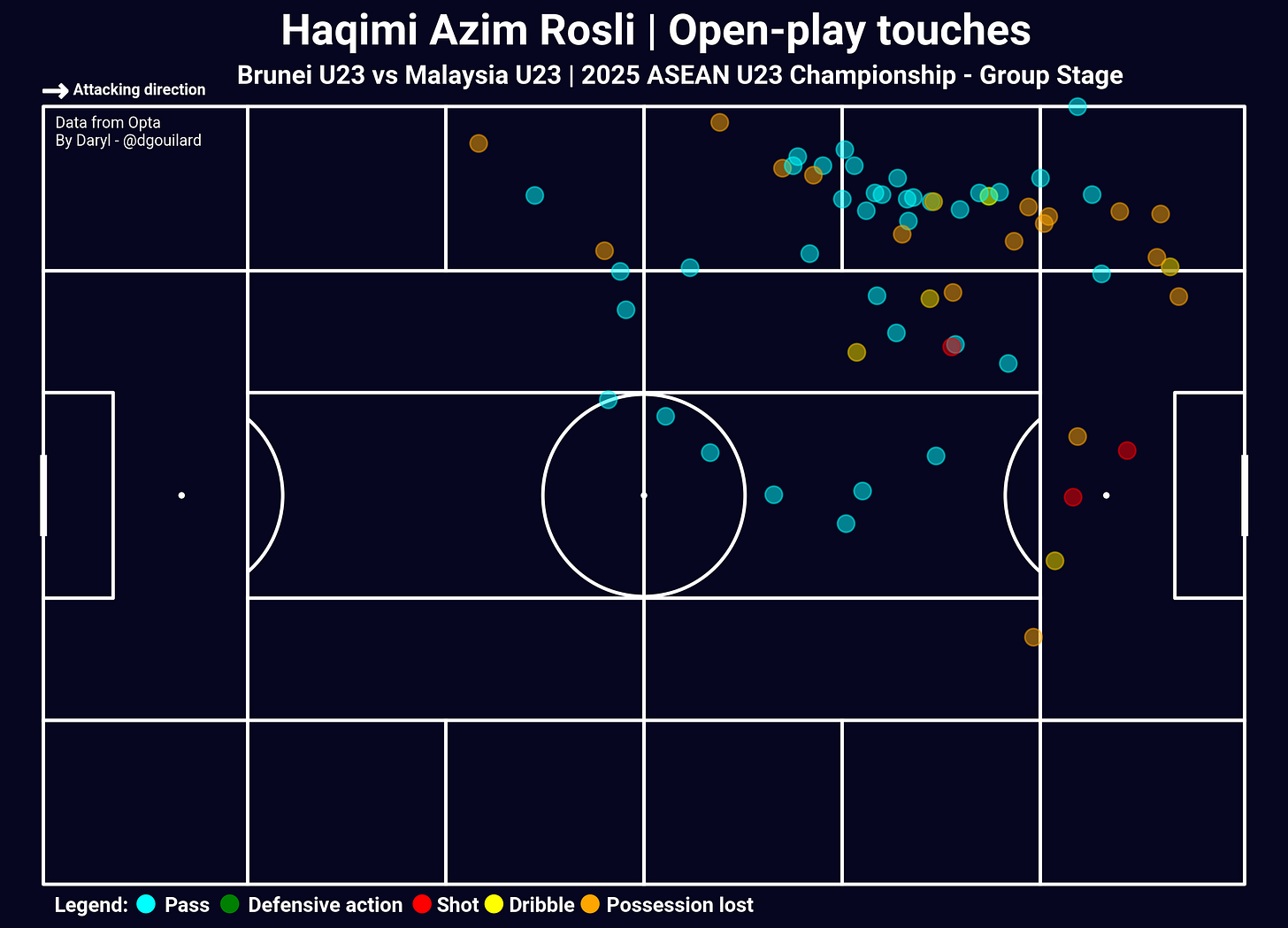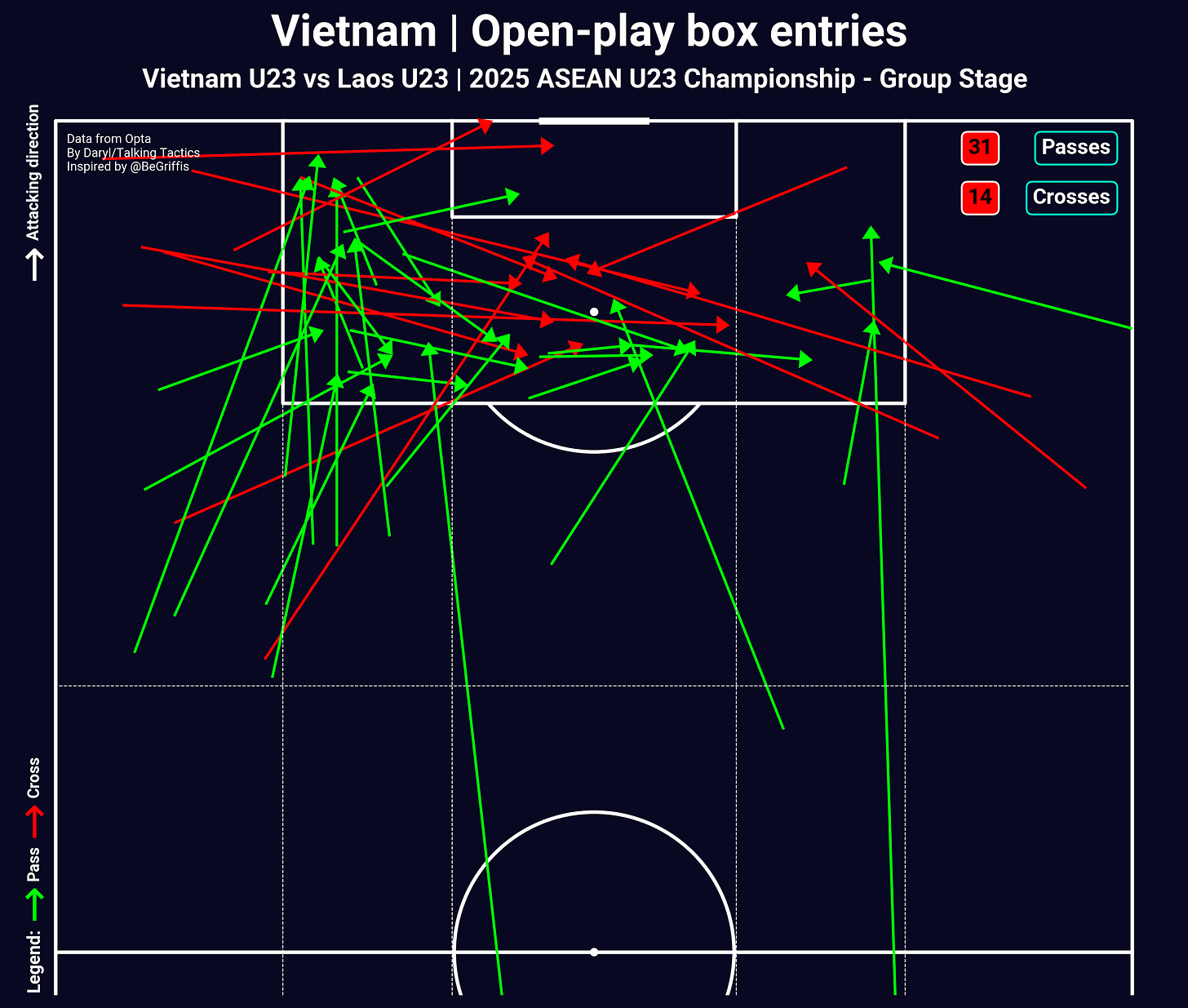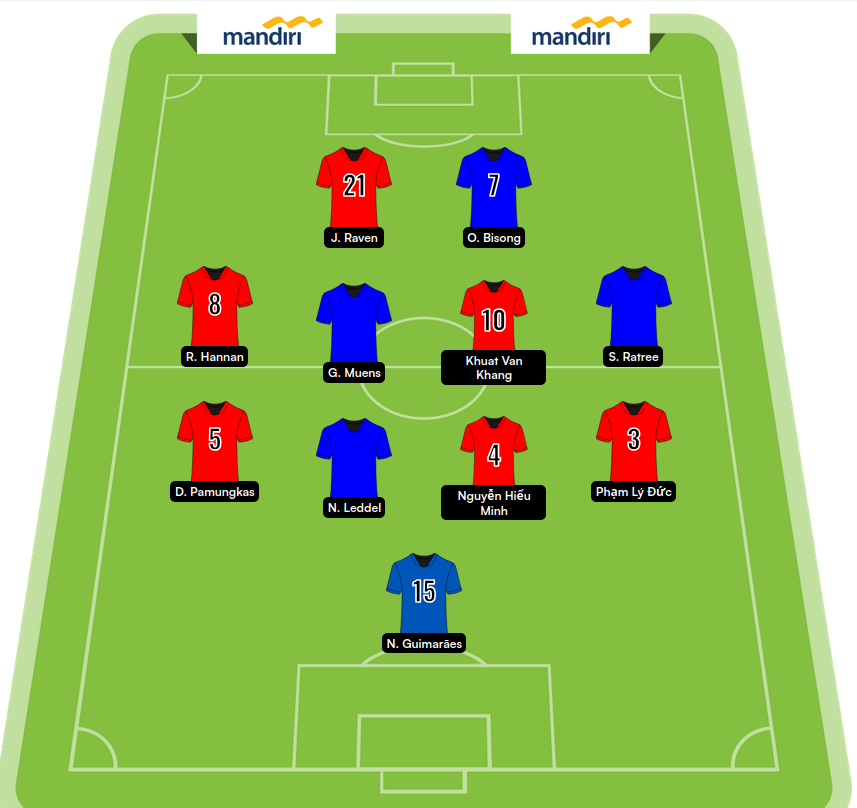ASEAN Cup Diary - U23 Edition: Day 3+4
After missing Day 2 (and the entire tournament), we "were" (belatedly) SO back for Matchday 2 of the Group Stage!
Missing out on day 2 of the ASEAN U23 Championship might prove to be the wrong decision for me as all four teams provided dramas and goals and, somehow, ended up with nothing to separate them. Cambodia and Laos set the show by playing out somewhat of a derby with both teams finished with one goal and one point each. However, the main attraction of day 2 was the clash between Myanmar and Timor-Leste where Timor-Leste caused a major surprise by keeping up with Myanmar and provided the fans with an 8-goal fest.
As much as both of these matches were fun to watch, they left all four teams in a slightly disadvantageous position to chase that single second-placed spot heading into Matchday 2 of the group stage. Both Thailand and Vietnam will be expected to crush their respective group with ease, which means all eyes will be on group A on the second matchday to find out who will take pole position in toping the group and toping the second-placed teams.
Let’s not wait any further and head straight into the actions of matchday 2!
Brunei Darussalam 1-7 Malaysia
Once again, I have to talk a lot more about Brunei’s opposition than discussing what they were able to do in the match because this was the second match that they got blew out and have completely sealed their fate as the worst team in this year’s tournament.
The first half turned out to be very similar to Brunei’s match against Indonesia where they found themselves being dominated in possession by Malaysia and could not get anywhere near the ball. However, the gap between their ability and the rest of the region was on show quite clearly even during the first 20 minutes of the half. Even though Malaysia did not have a variety of ways to attack and bypass Brunei’s mid-block, Brunei’s players still found themselves chasing the ball and leaving Malaysian players free to receive the ball on multiple occasions. The main reason that hurt Brunei quite heavily was their mid-block seemed to be set up to guide the opposition wide and prevent any passes coming in between the lines…which just happened to be the attacking style that Malaysia went with.
On many occasions, Malaysia’s attacking pattern was very clear to identify as the players attempted to create passing triangles out wide, particularly between a full-back, a midfielder, and a winger. The aim was to move the ball in and out of the half-space while encourage either the full-back or the winger to run in behind Brunei’s last defensive line for the final through ball that would help the team entering the final third. Once they got the ball in the final third, the ball carrier would rely on runners into the box, particularly the lone striker and the midfielders, to aim a cross or a cutback at to put themselves in a good position to score. This was very effective, but honestly, that was a very low bar to clear considering the technical superiority between the two teams. I doubt that Malaysia can expect seeing the same level of effective when using that play against the Philippines in the final matchday.
In particular, a lot of Malaysia’s attacks seemed to have gone down the left-hand side where left winger Haqimi Azim Rozli had a pretty busy day. On most occasions, he operated very wide and was often found near the touchline instead of moving into the half-space. He could also be found making runs in behind the shoulder of Brunei’s right-back to receive the ball from his teammates and get to the byline of the penalty box for a potential cross. At times, Malaysia’s #7 also attacked the box when the ball was on the opposite side, where he got himself on the scoresheet twice in each half.
At times, it felt relatively easy for Malaysia to enter the final third due to Brunei’s inability to stop third-man runs coming from the Malaysian midfielders. However, after the first two goals, Brunei’s defence managed to hold themselves up and was successful in blocking a few crosses and shots coming their way. That was maintained…until after the 30th-minute mark where the floodgate was opened once more as Malaysia’s pressure finally gave them the breakthrough with the third goal. From there, it was pretty much smooth sailing for Malaysia as they cruised to half time with a four-goal deficit.
Half time gave Brunei’s players the chance to regroup and refresh, which allowed them to contain the pressure once more and held out until the 70th minute, when their physicality once again let them down. Fresh changes brought fresh attacking pressures for Malaysia and they continued to assert their dominance with three more goals, including Fergus Tierney’s first goal to open his account for Malaysia and kickstarted a late chase for him against the other naturalised strikers in the tournament. However, a late surprise awaited as a quick counter-attack presented Brunei with their first goal of the tournament and probably a consolation in what is and will be a forgettable campaign for them. At least they will have something positive to take home and start building on, it is not much but…it is something!
Laos 0-3 Vietnam
Going into this match, I was expecting to see an exciting contest between a Laos team that just secured a point against Cambodia and the favourite to top group B in Vietnam. While the scoreline might have suggested a feisty contest, the actual match had a lot less excitement with Vietnam dominated possession but they ended up passing around the back and the midfielders quite often. I will be a bit critical here since I have been trying to be a neutral fan whenever my birth country play because I have known too many problems about Vietnamese football to be any more positive about it.
The match played out somewhat like I had expected when I saw that manager Kim Sang-sik went with the 3-5-2 formation against his compatriot Ha Hyeok-jun, who also went with a back five as he chose the 5-4-1 formation for Laos. It showed Ha’s intention of sitting back and defending the box while also waiting for opportunities to spring forward for a counter-attack. That was what happened throughout the first half with Vietnam opted to focus on wing attacks as their main way of entering the opposition’s penalty box. They utilised crosses very heavily, looking to make passes out wide and encouraging the wing-backs Nguyễn Phi Hoàng and Võ Anh Quân to make overlapping runs and push Laos’ last defensive line back closer to their own goal. From there, the wing-back would try to make a cross, or even an early cross, into the box where the attackers and oncoming midfielders would be ready to receive it for a cross.
This will be a reflection of how I see football and there is no absolutely right way to play football, but I think that approach made the game felt very dull and boring to watch. On many occasions, Laos’ defence were able to deal with the crosses quite easily as they managed to clear it out for a corner or clear it forward for their teammates who were on the edge or outside of the penalty box. Although, one of the very few occasions where it did bear fruit for Vietnam also resulted in Khuất Văn Khang’s opening goal, where Vietnam had 1v1 situations happened inside of the box, led to Laos’ defenders unable to reach the ball, and Văn Khang was able to volley the ball home. Still, the approach felt more like a ‘hit and hope’ approach to me and there is no guarantee that it will succeed against higher quality defences, which Vietnam will almost guarantee to face in the semi-final and final.
The second half was pretty much the same, but as Laos started to push forward a bit more and their physicality slowly decreased, they opened up more spaces in between their defensive lines for Vietnam to utilise. It resulted in more attempts to enter the box by playing through the lines, but those attempts were still slightly insignificant compared to how many times Vietnam tried to advance the ball down both wings, particularly down the left. It also resulted in more corners conceded by Laos since their players were not able to clear the ball properly, and it was from those corners where centre-back Nguyễn Hiểu Minh scored the final two goals to seal Vietnam’s first three points of the tournament and also seal Laos’ faith since they will not be playing in the third matchday and will be two points behind the Philippines in the race for the single second-placed spot.
I will give credits to Laos’ defence for putting everything on the line and trying to stop as many goals as possible, but they never proved to be a huge threat to Vietnam with their counter-attacks, especially when considering the fact that they got pinned down for the majority of the match. Laos’ counter-attacks were not very effective was because of two simple reasons, they did not have enough players to spring forward, and Vietnam’s rest defence always seemed to have the numerical superiority over Laos. Because of those two reasons, the counter-attacks got stopped on the halfway line on multiple occasions and could not advance further than that.
While I want to analyse a bit more about this match, I want to be honest and say that there was not much to say besides me being frustrated about Vietnam’s chance creation process. The ‘away’ side dominated possession and kept the ball for the majority of the match, yet they were slightly one-dimensional and relied on a single approach to get the ball into the box. It worked, but because this approach has proven many times that it will not be as effective against tougher oppositions, I only expect to see more from Vietnam starting from the semi-final. Meanwhile, commiserations for Laos since they have brought a fairly strong squad to this tournament, yet they come out empty-handed. Hopefully, however, this tournament will prove to be a good experience for a lot of their young players as they continue to build towards the SEA Games.
I am writing the conclusion part of this article wayyyyy past the conclusion of the tournament, and I will put my hands up and admit that I did a bad job covering the tournament after promising that I will cover the tournament in full. There have been a few personal things happening that are demanding more of my attention and they have taken the bit of free time that I have for this blog away from me for the past few weeks. Alas, I don’t want to use any excuses and I can only apologise for that.
It will take me a bit of time to sort out my personal stuff so, as mentioned in my first blog update, expect a bit more quiet periods from me. I will drop in with one or two articles here and there, or I might even go a different direction and do more Fantasy Premier League/SuperCoach stuff next season if I can get myself to play it and build a data model for it, but I promise to come back stronger and with better ideas.
For anyone interested, here is my ASEAN U23 Team of the Tournament from the few matches that I got to watch. I did also plan to write a data-focused article on this team and explain why I pick these players, but seems like that plan has also gone out of the window. Long story short, I believe these players had a great tournament and I think Opta’s data will also agree with most of these picks.


